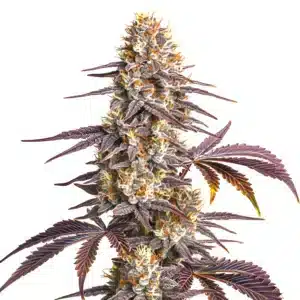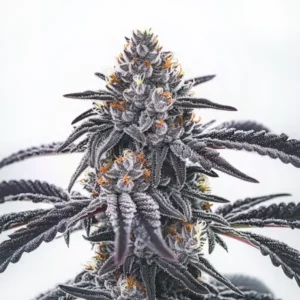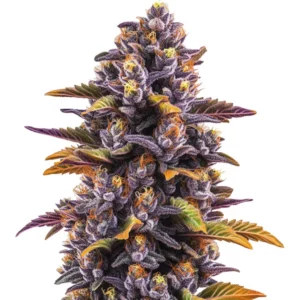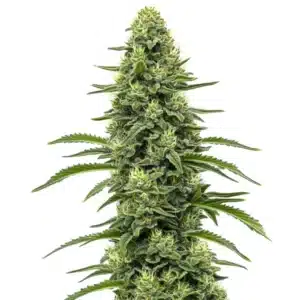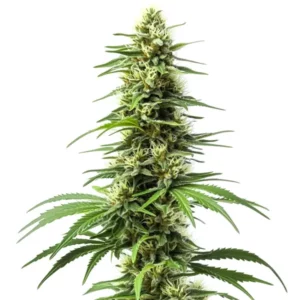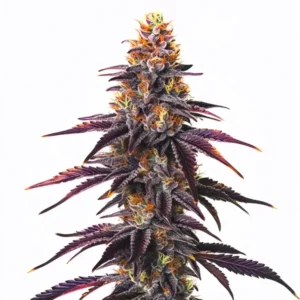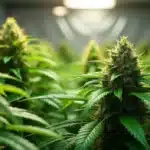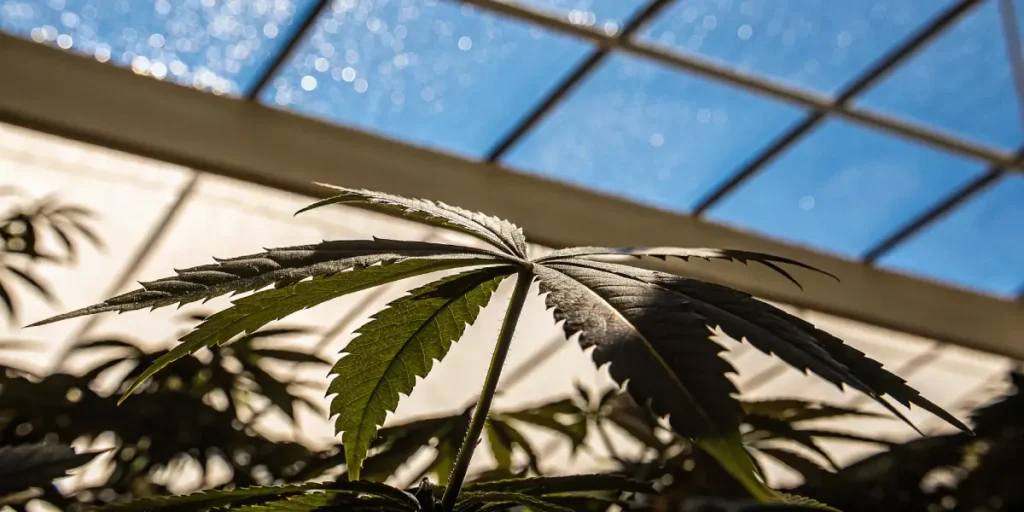
How Transpiration Supports Cannabis Plant Development
Transpiration is one of those terms you might not hear every day, but it’s crucial for your cannabis plants. It’s the process where water moves through a plant and evaporates from parts like leaves, stems, and flowers. This might sound simple, but it plays a big role in how healthy and productive your cannabis plants are. Knowing how transpiration supports cannabis plant development helps growers see its importance in nutrient uptake, cooling, and overall growth efficiency.
When you grow cannabis, you’re aiming for robust plants with high yields. Transpiration supports cannabis plant development by regulating temperature, aiding nutrient uptake, and maintaining plant structure. It’s like the plant’s internal air conditioning and transport system all in one.
Recommended Strains
Blue Dream
|
|
THC | 17% - 24% (Medium) |
|
|
Type | Feminized |
|
|
Yield | High |
|
|
Phenotype | 50% Indica / 50% Sativa |
GG4
|
|
THC | 27% (High) |
|
|
Type | Feminized |
|
|
Yield | High |
|
|
Phenotype | 40% Indica / 60% Sativa |
For many growers, knowing the importance of transpiration in cannabis growth is key to maximizing their crop’s potential. Whether you’re growing a single plant or managing a large operation, keeping an eye on transpiration can make a big difference in your results.
Transpiration’s Role in Cannabis Nutrient Uptake
Cannabis plants need nutrients to thrive. Transpiration is essential for moving those nutrients from the soil to different parts of the plant. As water evaporates from the leaves, it creates a suction force that pulls water and nutrients up from the roots.
This process ensures that nutrients like nitrogen, phosphorus, and potassium—key elements for plant growth—are distributed throughout the plant. Without effective transpiration, your plants might not get the nutrients they need, which can stunt growth and reduce yields.
Besides to nutrient transport, transpiration helps maintain the plant’s turgor pressure, which is crucial for keeping the plant upright and supporting its structural integrity. This role of transpiration in cannabis nutrient uptake is especially important when supporting tall and heavy-yielding strains.
The importance of transpiration in cannabis growth extends beyond nutrient movement; it also facilitates the removal of excess salts from the root zone. This prevents the buildup of potentially harmful substances, safeguarding the plant’s overall health and optimizing its growth environment.
How Transpiration Affects Cannabis Yield
Your goal as a grower is likely to produce the best yield possible. Transpiration affects cannabis yield by influencing how well plants can photosynthesize. Photosynthesis is the process where plants use sunlight to convert carbon dioxide and water into glucose and oxygen.
When transpiration is happening efficiently, plants can photosynthesize more effectively. This means they produce more glucose, which fuels growth and leads to larger, healthier plants. If you’re cultivating strains like Blue Dream from Blimburn Seeds, optimizing transpiration can help you get the most out of your plants.
Additionally, how transpiration affects cannabis yield is evident through its role in maintaining optimal leaf temperature. By cooling the plant through evaporative cooling, transpiration prevents heat stress, which can otherwise limit the plant’s ability to produce high-quality flowers.
Managing environmental conditions to ensure proper transpiration rates can lead to a more consistent and robust flowering phase. This consistency is crucial for achieving the desired potency and flavor profiles, ultimately enhancing the market value of your cannabis crops.
Promos & Deals
Relationship Between Transpiration and Cannabis Photosynthesis
Photosynthesis and transpiration are closely linked. When a cannabis plant transpires, it opens its stomata—tiny pores on the leaves. This opening allows carbon dioxide to enter the plant, which is essential for photosynthesis.
The relationship between transpiration and cannabis photosynthesis is crucial. If the stomata are closed due to insufficient transpiration, the plant can’t take in carbon dioxide, slowing down photosynthesis and ultimately reducing growth.
Moreover, the relationship between transpiration and cannabis photosynthesis ensures that oxygen, a byproduct of photosynthesis, is efficiently expelled from the plant. This exchange of gases is vital for maintaining healthy cellular respiration and metabolic functions within the plant.
Knowing this relationship emphasizes the importance of transpiration in cannabis growth, as it highlights how interconnected these processes are. By facilitating a balanced gas exchange, transpiration directly impacts the plant’s ability to convert light energy into usable chemical energy.

Impact of Transpiration on Cannabis Plant Health
Transpiration doesn’t just keep your plants growing; it also keeps them healthy. By regulating temperature and removing excess water, transpiration helps prevent diseases and mold, which thrive in overly moist conditions.
Healthy transpiration rates can also reduce the risk of pests. Many pests are attracted to weak plants. By supporting robust growth through effective transpiration, you make your plants less appealing to these unwanted visitors.
The impact of transpiration on cannabis plant health is also evident in its role in detoxifying the plant. By facilitating the removal of waste products through the transpiration stream, the plant can maintain a cleaner internal environment, which supports vigorous growth and resilience.
Furthermore, optimizing transpiration can enhance the plant’s immune response. Well-hydrated and nourished plants can better withstand environmental stresses and pathogen attacks, leading to a more successful and rewarding cultivation experience.
Practical Tips for Managing Transpiration
Managing transpiration is all about creating the right environment. Start by monitoring your grow room’s temperature and humidity levels. Cannabis plants generally prefer temperatures between 70-85°F and a relative humidity of 40-60%.
Consider using fans to improve air circulation. This helps ensure that water vapor is effectively removed from the plant’s surface, encouraging consistent transpiration. Also, make sure your plants have enough space to breathe and aren’t overcrowded.
Regularly inspecting your plants for signs of stress, such as wilting or leaf curling, can provide insights into their transpiration rates. Adjusting environmental conditions accordingly can help restore balance and support optimal plant health.
Incorporating mulch into your growing medium can also help manage transpiration by reducing soil evaporation and maintaining consistent moisture levels. This practice can enhance water efficiency and promote sustainable cannabis cultivation.
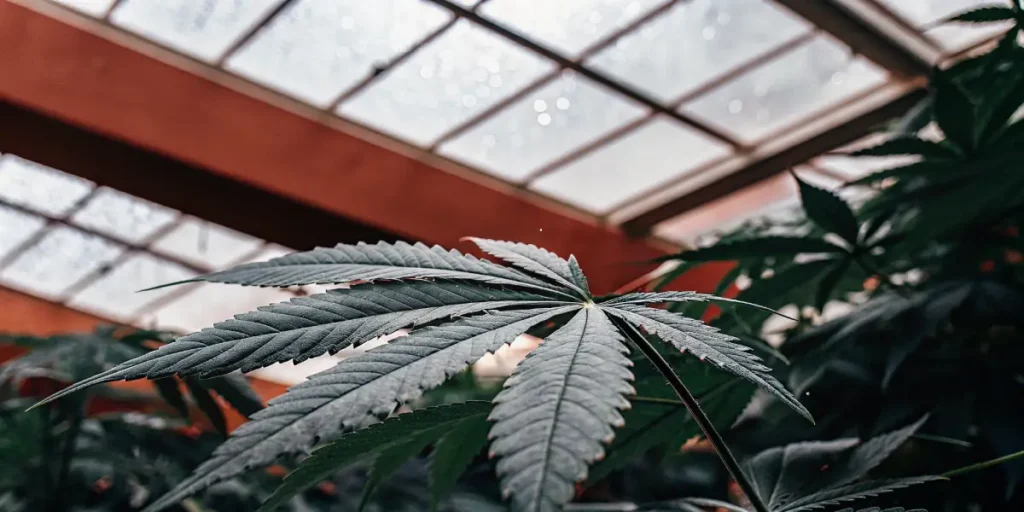
FAQs
What is the importance of transpiration in cannabis growth?
Transpiration is crucial for cannabis growth because it regulates temperature, facilitates nutrient uptake, and supports photosynthesis. By ensuring water and nutrients move effectively through the plant, transpiration aids in producing healthier and larger plants.
Without proper transpiration, plants can suffer from nutrient deficiencies and heat stress, leading to poor growth and reduced yields. For growers, knowing and managing transpiration is essential for optimizing plant development and achieving high-quality harvests.
Furthermore, the importance of transpiration in cannabis growth can be seen in its role in supporting the plant’s overall resilience. By maintaining a stable internal environment, transpiration allows cannabis plants to adapt to environmental fluctuations and thrive in various conditions.
The knowledge of how transpiration supports cannabis plant development empowers growers to implement practices that enhance plant vitality, leading to more successful and rewarding cultivation outcomes.
How does transpiration’s role in cannabis nutrient uptake work?
Transpiration creates a suction force that pulls water and nutrients from the soil into the plant. As water evaporates from the leaves, this process draws essential nutrients like nitrogen and potassium upwards, ensuring they reach all parts of the plant.
This nutrient uptake is vital for healthy growth, especially in nutrient-demanding strains. Ensuring effective transpiration can prevent nutrient deficiencies and promote vigorous plant development, leading to better overall health and productivity.
Transpiration’s role in cannabis nutrient uptake also includes enhancing the availability of micronutrients, which are required in smaller quantities but are equally important for robust plant development. This ensures that the plants receive a balanced diet of essential elements.
By knowing how transpiration supports cannabis plant development, growers can tailor their nutrient management strategies, ensuring that the plants have access to the necessary building blocks for optimal growth and yield.
How does transpiration affect cannabis yield?
Transpiration affects cannabis yield by influencing photosynthesis. Efficient transpiration allows for optimal carbon dioxide intake, which is crucial for photosynthesis. This results in more glucose production, fueling growth and increasing yield potential.
Additionally, proper transpiration helps prevent issues like leaf wilting and nutrient burn, which can negatively impact yields. By managing environmental conditions, growers can enhance transpiration and maximize their plants’ yield potential.
Another factor in how transpiration affects cannabis yield is its ability to stabilize the microclimate around the plant canopy. A stable environment supports consistent growth rates and flower development, contributing to a more uniform and abundant harvest.
Incorporating practices that optimize transpiration, such as precise humidity control and strategic pruning, can further enhance yield quality and quantity, providing growers with a competitive edge in the cannabis market.
What is the relationship between transpiration and cannabis photosynthesis?
Transpiration and photosynthesis are interconnected processes. During transpiration, stomata open to allow water vapor to exit, simultaneously permitting carbon dioxide to enter. This carbon dioxide is essential for photosynthesis, where it is converted into glucose.
If transpiration is insufficient, stomata may close, limiting carbon dioxide intake and slowing photosynthesis. This can hinder plant growth and reduce yields. Maintaining optimal transpiration ensures efficient photosynthesis and supports healthy plant development.
The relationship between transpiration and cannabis photosynthesis also involves the regulation of water status within the plant. Optimal transpiration rates prevent water stress, allowing photosynthetic machinery to function efficiently without the disruptions caused by drought conditions.
Knowing how transpiration supports cannabis plant development through its connection to photosynthesis enables growers to create an environment that maximizes both processes, leading to enhanced plant vigor and productivity.
What is the impact of transpiration on cannabis plant health?
Transpiration impacts plant health by regulating temperature and preventing excess moisture, which can lead to mold and disease. Effective transpiration helps maintain the plant’s internal environment, reducing stress and promoting resilience against pests.
Healthy transpiration rates also support nutrient uptake and photosynthesis, leading to stronger, more vigorous plants. By managing environmental conditions, growers can optimize transpiration and enhance their plants’ overall health and productivity.
Moreover, the impact of transpiration on cannabis plant health extends to its role in promoting root health. By drawing water from the root zone, transpiration encourages the development of a robust and expansive root system, which is essential for nutrient absorption and anchoring the plant.
Maintaining an optimal transpiration rate is a proactive approach to plant health management, as it minimizes the risks of environmental stresses and ensures the plant’s physiological processes operate at peak efficiency.




